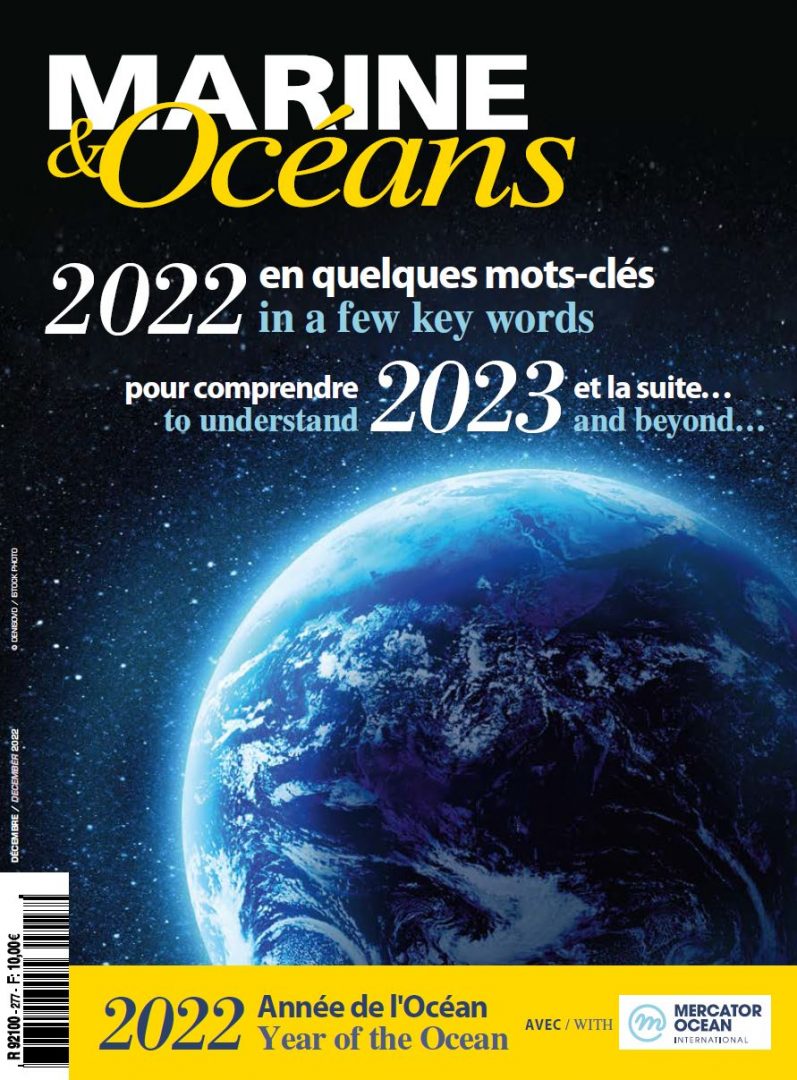 Engineer and astronaut at the European Space Agency (ESA), Jean-François Clervoy has made three space missions with NASA. He is an expert in terms of the manned flight program of the communication department and the durable development office of the ESA. He is equally president of the Novespace company, a subsidiary of the National Center for Space Studies (CNES) charged with the parabolic flights program on the A 310 Zero-G plane based at Bordeaux-Mérignac.
Engineer and astronaut at the European Space Agency (ESA), Jean-François Clervoy has made three space missions with NASA. He is an expert in terms of the manned flight program of the communication department and the durable development office of the ESA. He is equally president of the Novespace company, a subsidiary of the National Center for Space Studies (CNES) charged with the parabolic flights program on the A 310 Zero-G plane based at Bordeaux-Mérignac.
Interview by Erwan Sterenn
—
What inspires you most about these two environments, the sea and outer space?
Both have common points. They are both immense environments, and naturally hostile to Man. To live and work there requires therefore to have recourse to systems which compensate this hostility, accompanied by stringent safety procedures. It is necessary to always remain extremely vigilant and on an operational footing. For an astronaut, it is the oceans which are the most striking when observing the planet from outer space. The continents seem almost small by comparison to the space they occupy.
In what domains do these two environments interact and with what effect?
In order to train in weightless conditions or in reduced weight conditions as on the Moon or on Mars, the astronauts, who have to be by obligation, qualified as divers, utilize the large swimming pools and sometimes the sea: They wear specially designed diving suits, like that created by the specialist maritime company COMEX. I therefore had to pass many hours underwater, in a creek in the Frioul islands, to simulate exploration on the Moon. Further, in order to train for the severe conditions of living and working in Space, it is necessary to utilize regularly terrestrial locations considered “analogous”. The most utilized is an undersea location off the Florida coast. The ocean has not finished to serve as a preparation for space missions. It is useful for Space but the opposite is even more true. The navigation satellites like those of the European Galileo system have become an absolute necessity for the positioning of ships. They are also Space apparatus which enable the management of maritime traffic, to pick up a ship in distress, to guide the rescue vessels, to communicate on the high seas remote from all the land-based radio stations. The sophisticated scientific instruments embarked on the satellites inform precisely on the state of the ocean, the height of the waves, the force of the current, the temperature and salinity of the sea, and this on a worldwide scale. They also give information on the atmosphere for meteorological forecasts which are at the same time precise and global in application. More than half of the parameters describing the climate are issued exclusively from the satellite based data.
Space and the oceans, are they confronted today by the same problems in terms of their governance?
At over 100 kilometers altitude, the notion of air space disappears and Space at this point on, belongs to all the world. Whatever the owner, a satellite makes sixteen orbits around the world each day. It passes therefore in all impunity over all the air space. Since 1967, Space benefits from a treaty which grants it a pacific status. From a purely economic point of view, where space applications are concerned, it’s common knowledge that the manufacturers are locked in a ferocious competition. But up there, when it concerns exploration and therefore the quest for knowledge, whether by humans, or by robots, then to the contrary it’s a total collaboration which prevails between the States. This began after the first Apollo-Soyuz flight in 1975, after the opening up of East – West relations. Since seventeen years now, you will find in the International Space station, astronauts of different nationalities, Americans, Russians, Japanese, Europeans, Canadians… Today, the nations provide mutual assistance in Space, and this despite all the diplomatic disputes which could exist on Earth, for example, one could ensure a vital supply, while another executes in return a needed repair.
Its become customary to say that we know less about the ocean depths than Space. What do you think?
It’s both true and false. True, because no satellite can explore the ocean depths. It’s impossible to know veritably the contents of the oceans except for that which we can observe ‘in situ’. We know that the ocean conceals an enormous biological and mineral richness and that there is still much to explore. Whereas in the immediate Space, that which is closest to the Earth, it is composed essentially of a void, and some celestial bodies, but no sea. The Moon and Mars expose the integrality of their surface to those instruments of observation placed in their orbit. We therefore recognize them visually better than the oceans. It’s false because there is still an immense mystery surrounding the furthest reaches of Outer Space, and therefore certainly more to discover than by comparison to the ocean floor. In particular, we have as of today identified with certainty the existence of oceans of water under the frozen crust of several of Jupiter’s moons and of Saturn. This constitutes dearly held exploration targets by the scientists for future interplanetary expeditions of which the technologies could in turn be utilized for the exploration of our terrestrial oceans.
Certain observers consider that to invest in the knowledge and development of the oceans would have been, and would still be, more useful and profitable than Space exploration?
The two should be complementary and not opposed. But it is necessary to keep in mind that the economy of the sea weighs more heavily than that of Space, and that there are budgets which are not intercommunicating vessels, and which cannot be transposed one to another with a simple snapping of fingers. To give you an idea, the European program for manned space flight costs only one Euro per inhabitant per year for the participating countries.
What is the future of Man in Space, and what is the next great space adventure?
Between the years 2020 and 2030, it is practically certain there will be an inhabited space station in orbit around the Moon and which will be named “Deep Space Gateway (DSG)”. In 1969, the conquest of the Moon was the result of a race. Today, it’s an issue of research and exploration by cooperation. This station DSG will be completed by an infrastructure on the Moon promoted by the ESA under the name of “Moon village”. The objective is not only to explore the Moon but also to develop it and to see if it will be possible to recover essential resources, (water, fuel, oxygen) with a view to voyage further, to Mars for example. To this day, the most realistic calendar estimations puts humans in orbit around Mars by about 2035, and a manned surface exploration expedition in the years 2040s. In the meantime, it will be feasible to send automatic production units with the role of preparing the necessary resources for human settlement during future manned exploration expeditions. All of this corresponds finally with the speech of Elon Musk who theorizes on the fact that Man has a calling to become a multi-planet species.
Aren’t there some similarities between a voyage to Mars and the expeditions of the early great navigators, cut off from the world as soon as out of sight of land?
Yes, of course! You find in the same way, the feelings of isolation, in an environment hostile to Man, help improbable, impossible even, communication impossible or difficult and very slow, and finally the confinement. At the time of the great explorers, the navigators were confined in a ship. Today, they are in a spacecraft. You discover the same spirit of audacity, the taking of risks, and the taste for the confrontation with an extreme environment. In the Space closest to the earth, things are simpler,… you should know that as of today, an emergency return from the International Space station is possible in three hours. While for a skipper in the Vendée Round the World race in distress in a storm in the middle of the Pacific, a return in such a time would be impossible!
How is France situated in the domain of International Space?
Well situated! France is at the head of the European contingent, even with resources well below those of the Americans and the Russians. In France, we have the means to construct a satellite from A to Z. The Russians have an experience of manned flight more developed than ours. But we have a very refined technical competence. We have demonstrated this by the mission Rosetta, where we have succeeded in landing a probe, called Philae, on a comet at 500 million kilometers distance from Earth, and after a voyage of ten years. A small technological prowess that the whole world has congratulated.
Man is beginning to take care of his planet. What is the situation in Space which we know to be polluted with innumerable debris? What does the pollution consist of, what effects, what solutions are possible?
In effect, in addition to the natural material orbiting in space, there is a lot of debris as a consequence of human activity. Numerous studies have been carried out on the different ways to recover it. You can imagine a sort of giant net, with articulated arms…..but these are still operations too onerous. When the debris is at less than 400 kilometers from the Earth, it finishes by rapidly disintegrating naturally in the stratosphere. Its when it’s much higher that it’s a problem. Sometimes, they collide with one another and explode mutually, which doesn’t necessarily render them less dangerous! A small debris can be just as much a nuisance as a big one. It is estimated that an anti-satellite weapon tested by the Chinese several years ago, at too high an altitude, has increased by thirty fold the risk of collisions on our fleet of European satellites. It was an error. Of course, Space being devoid of biological life, this debris has no major impact ecologically speaking, contrary to the pollution to be found in the oceans and which weighs heavily on the entire eco-system. Today the modern satellites are designed to avoid the generation of debris, in fact even better, they contribute for some, in an undeniable way, to durable development as a consequence of the multiple services that they provide to better understand and manage our planet. More than 50% of the parameters utilized by the GIEC (Intergovernmental Expert group on Climate Evolution) originate exclusively from the satellites. Finally, during the manned flights the astronauts are the champions of recycling and anti-waste! A space craft is in itself a small reproduction of the terrestrial eco-system.
What links do you feel with the world of the oceans?
I think that as with many astronauts, the taste of adventure and of exploration is born under the influence of the great explorers and navigators. The techniques and the common challenges have brought the two domains ever closer. For the final touches for the spacesuits and the sea trials, I worked, navigated and dived with Henri Delauze, engineer and creator of the maritime company COMEX, and sadly deceased in 2012. A man of great vision and audacity, and for whom I have an enormous esteem. Further, my first crew, took with them in the American space shuttle the famous red bonnet of Commandant Cousteau to give it back to him later! Since fifteen years, I’ve corresponded regularly with Jacques Rougerie, oceanographer and architect, who created the concept of the Oceanic research station SeaOrbiter where the astronauts would train before the future flights of very long duration. These links described above between the sea and Space have naturally inspired me to commit to the ocean cause at the side of very active actors such as Francis Vallat, Philippe Vallette, Cécile Gaspar. I sponsor the association «Te mana o te moana» for the protection of the ocean in French Polynesia, and I also support the World Ocean Network. I feel today as much oceanaut as astronaut.



